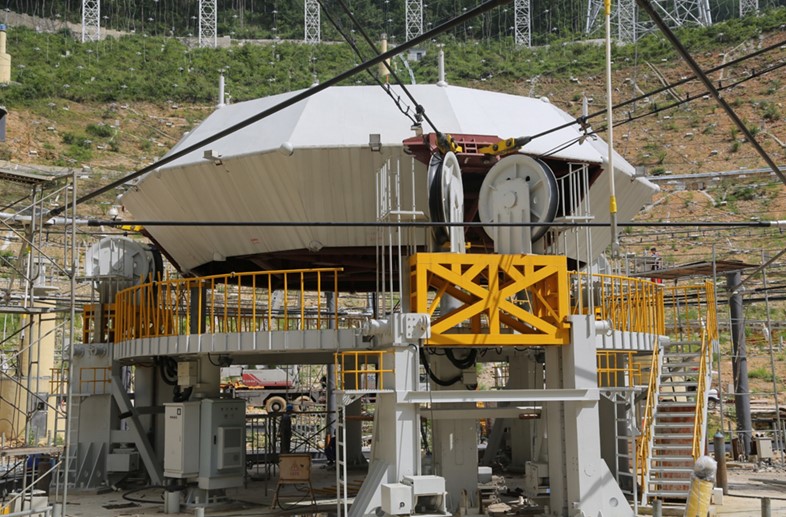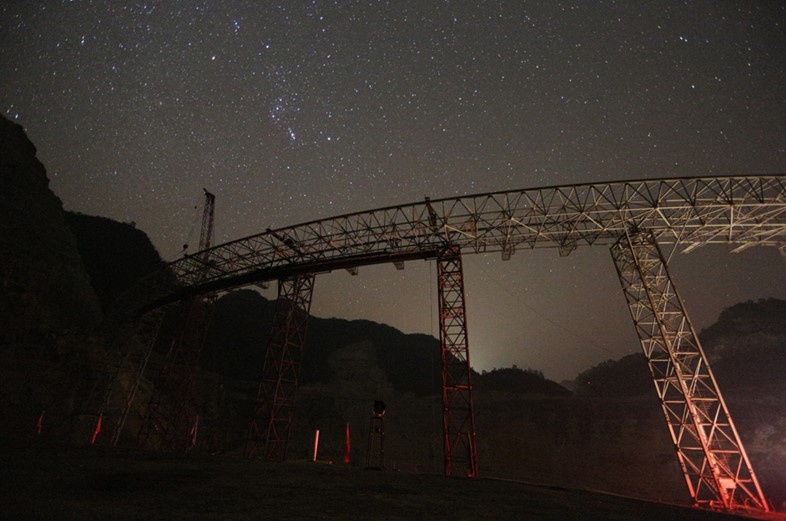Chris Hatherill, AKA super/collider, zooms in on the extraordinary Aperture Spherical Telescope in the lush mountains of Guizhou Province, China
Where on Earth?
Guizhou Province, China
GPS Coordinates: 25°39′N 106°51′E
The mountains of Guizhou Province in southwest China are like something out of a timeless Chinese landscape painting – with one glaringly futuristic exception. Officially operational as of this week, the massive 500-metre Aperture Spherical Telescope (FAST) fills an entire bowl-shaped depression amid the forested hilltops that stretch away towards the horizon in this still green and quiet part of China.

It’s taken the Chinese Academy of Sciences just five years to construct what is now the world’s largest single-aperture telescope. Dubbed “天眼” (which translates as "Heaven's Eye" or "The Eye of Heaven”) the 500m radio telescope is twice as sensitive as the similarly-built 305m dish in Puerto Rico, which we looked at in a previous column. To make room for the massive installation and ensure there are no radio sources nearby to interfere with observations, the Chinese government compensated and relocated over 9,000 people from a village at the centre of the bowl and the surrounding area.

What on Earth?
FAST is composed of a giant dome made up of 4450 triangular panels, surrounded by six white pylon towers which support a 30-tonne receiver that hovers over the bowl. Since the dish is fixed in the karst limestone landscape, it rotates with the Earth. Radio signals from sources in space are reflected off the moveable panels towards the mobile receiver, which allows astronomers to ‘point’ the telescope and track objects as they pass across the sky above. Nan Rendong, chief scientist on the project, describes it kind of poetically: “A radio telescope is like a sensitive ear, listening to tell meaningful radio messages from white noise in the universe. It is like identifying the sound of cicadas in a thunderstorm.”
Some of the first targets for FAST will be pulsars – rapidly spinning ultra-dense stars that emit radio waves as they rotate. Finding more of these out in space could lead to breakthroughs in the field of gravitational waves, which are ripples in space time predicted by Einstein but only directly observed for the first time earlier this year. Other fields of research will include hunting for neutral hydrogen clouds and dark galaxies to further our understanding of dark matter, and searching for long-chain carbon molecules in our galaxy to learn more about star formation. Perhaps most exciting of all, SETI researchers will be be able to use the telescope to listen for distant signals coming from alien civilisations.

How on Earth?
There is a visitor centre and planetarium at the telescope, located about 170km south of the provincial capital Guiyang, which has an airport and is also part of China’s high speed rail network. For more information, visit the website.
